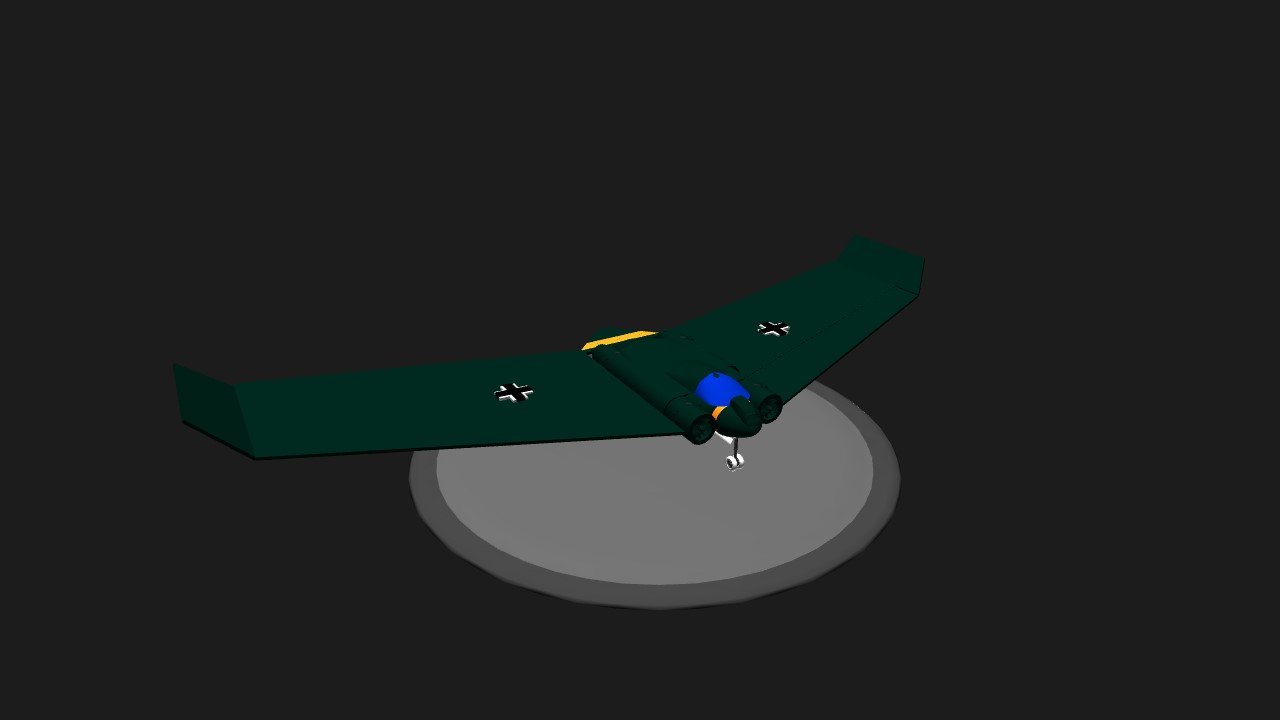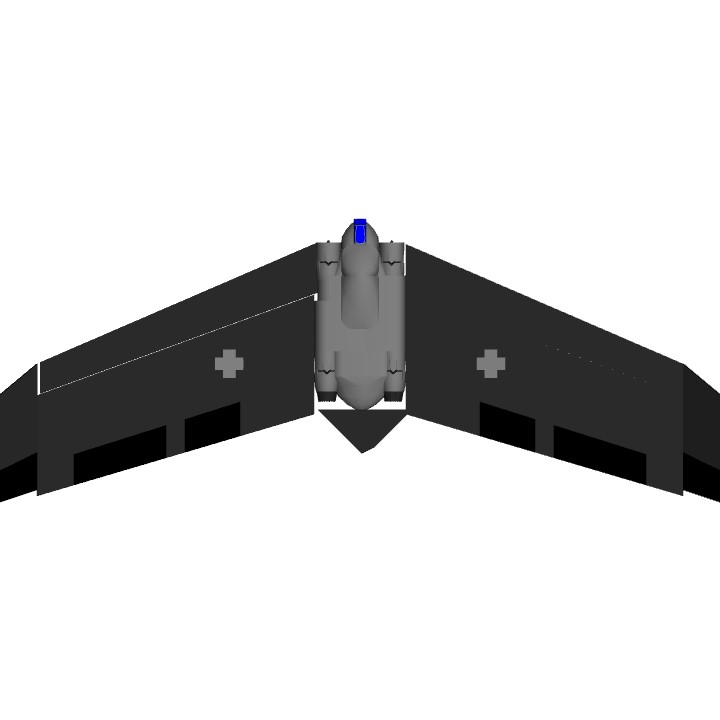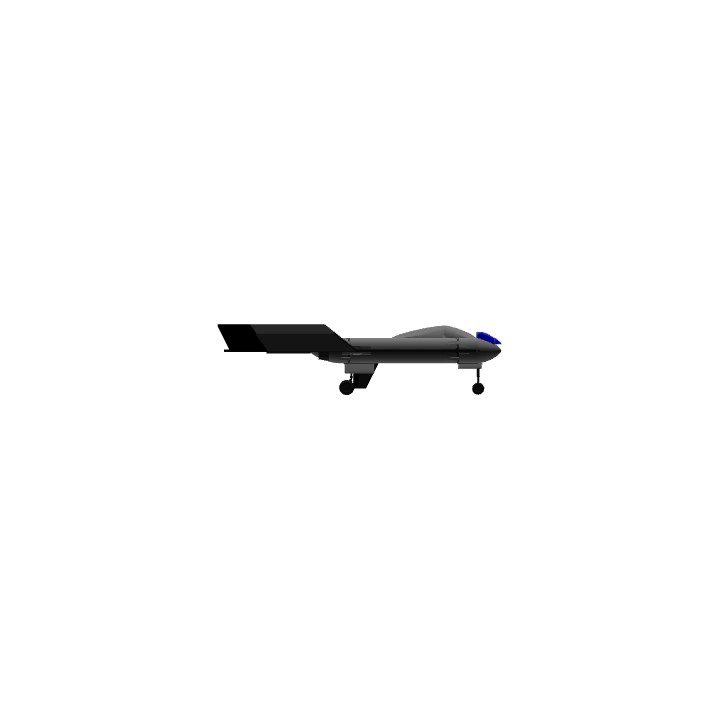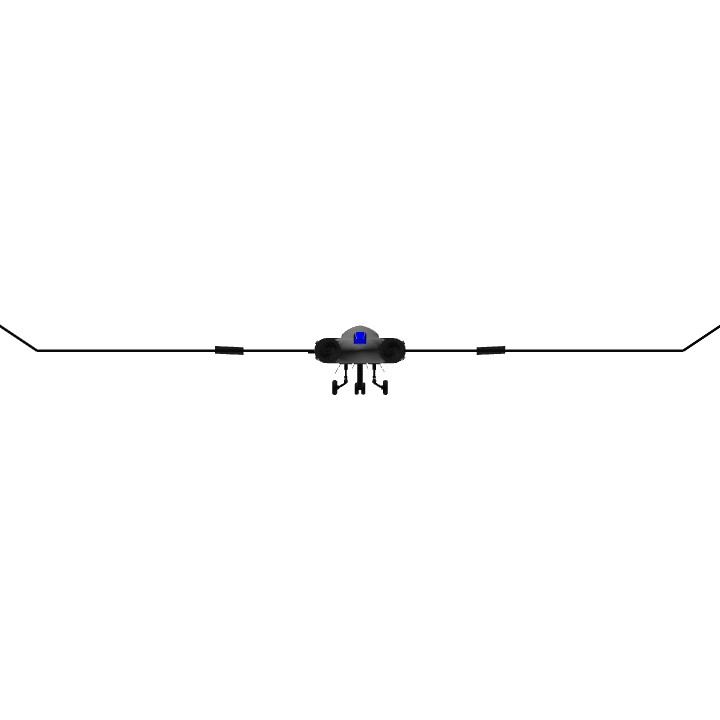I really think this is my best jet ever. Fly at 35 percent power after takeoff.
The Horten H.IX, RLM designation Ho 229 (often called Gotha Go 229 because of the identity of the chosen manufacturer of the aircraft) was a German prototype fighter/bomber designed by Reimar and Walter Horten and built by Gothaer Waggonfabrik late in World War II. It was the first pure flying wing powered by jet engines.[1]
The design was a response to Hermann Göring's call for light bomber designs capable of meeting the "3×1000" requirement; namely to carry 1,000 kilograms (2,200 lb) of bombs a distance of 1,000 kilometres (620 mi) with a speed of 1,000 kilometres per hour (620 mph). Only jets could provide the speed, but these were extremely fuel-hungry, so considerable effort had to be made to meet the range requirement. Based on a flying wing, the Ho 229 lacked all extraneous control surfaces, lowering drag. It was the only design to come even close to the 3×1000 requirements and received Göring's approval. Its ceiling was 15,000 metres (49,000 ft).[2]
Since the appearance of the B-2 Spirit flying-wing stealth bomber in the 1990s, its similarities in role and shape to the Ho 229 has led many to retrospectively describe the Ho 229 as "the first stealth bomber".[3] A static reproduction of the only surviving Ho 229 prototype, the Ho 229 V3, in American hands since the end of World War II was constructed in the very early 21st century and later tested by the U.S. military, who found the basic shape, paint and laminating adhesive composition of the mockup copy would provide for 37% reduction in detection range against the British Chain Home radar of the 1940s, but no significant stealth benefit against most other contemporary radar systems.[3]
Specifications
General Characteristics
- Created On iOS
- Wingspan 93.7ft (28.5m)
- Length 36.8ft (11.2m)
- Height 9.0ft (2.8m)
- Empty Weight 18,011lbs (8,169kg)
- Loaded Weight 39,111lbs (17,740kg)
Performance
- Power/Weight Ratio 3.447
- Wing Loading 21.2lbs/ft2 (103.4kg/m2)
- Wing Area 1,846.2ft2 (171.5m2)
- Drag Points 5207
Parts
- Number of Parts 46
- Control Surfaces 8
- Performance Cost 482





I see a horten 229 very old plane so cool to fly it @HypnoticChicken